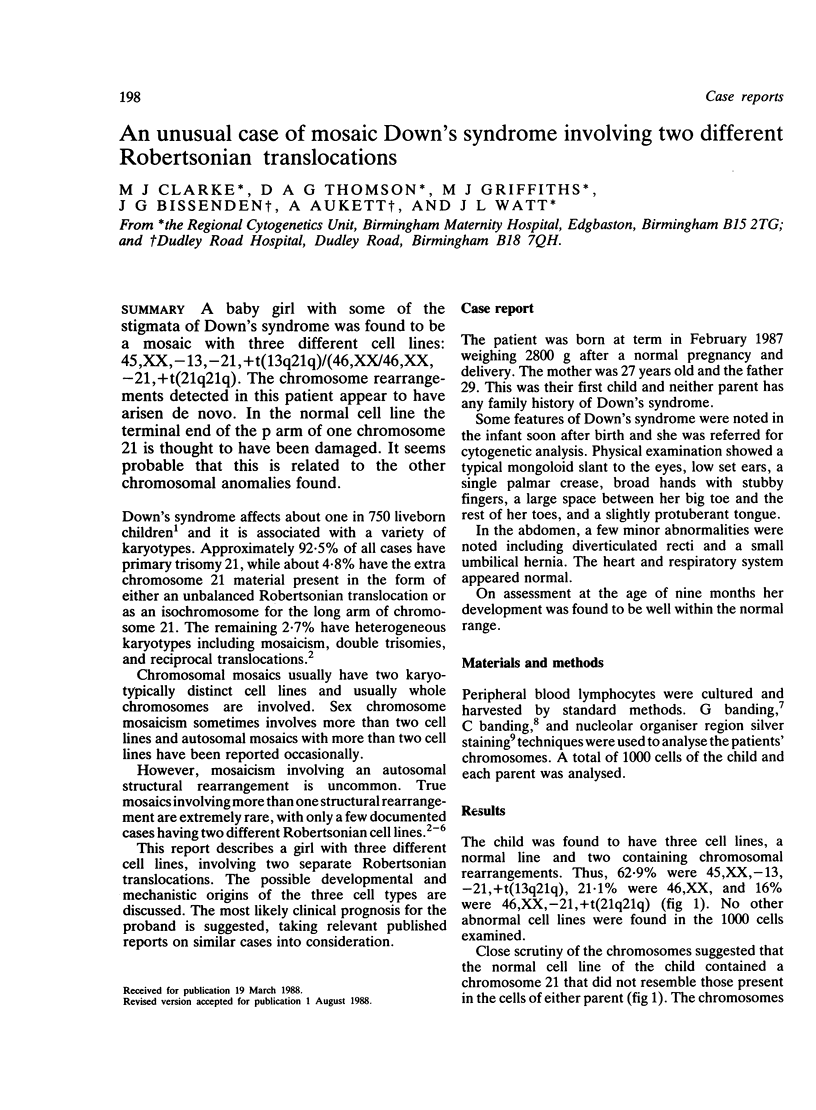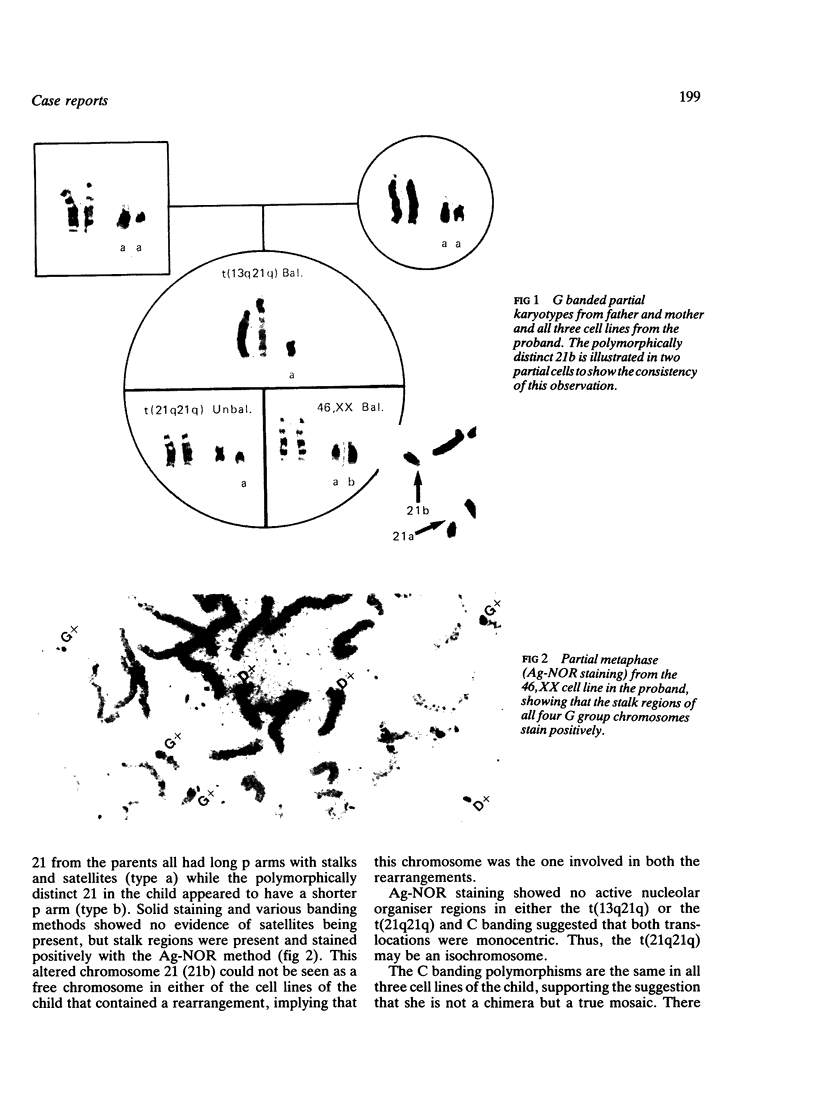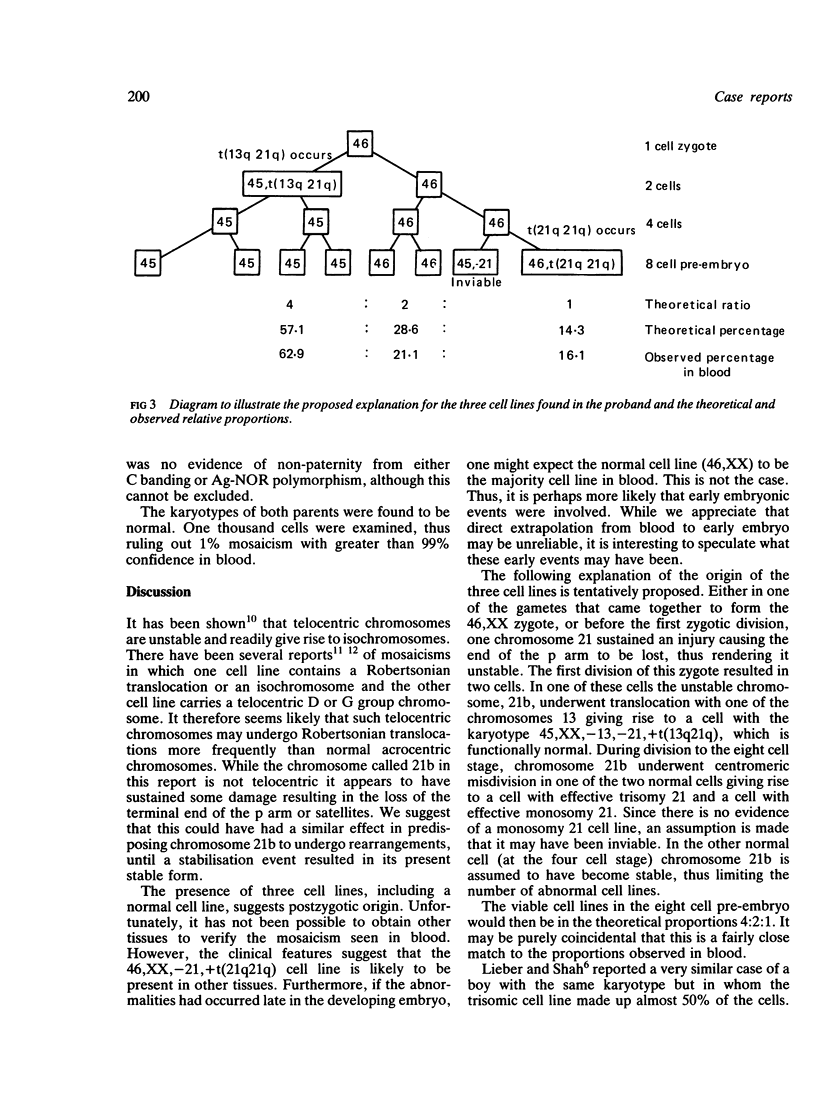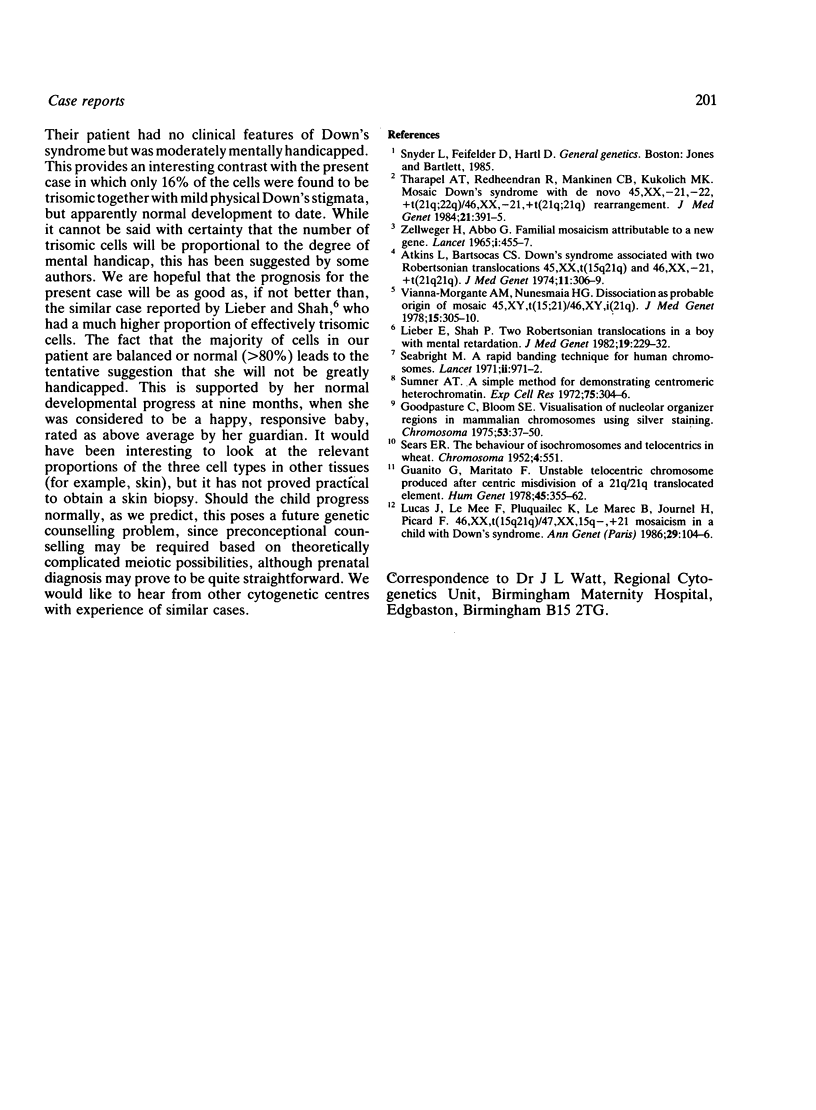Abstract
A baby girl with some of the stigmata of Down's syndrome was found to be a mosaic with three different cell lines: 45,XX,-13,-21,+t(13q21q)/(46,XX/46,XX, -21,+t(21q21q). The chromosome rearrangements detected in this patient appear to have arisen de novo. In the normal cell line the terminal end of the p arm of one chromosome 21 is thought to have been damaged. It seems probable that this is related to the other chromosomal anomalies found.
Full text
PDF



Images in this article
Selected References
These references are in PubMed. This may not be the complete list of references from this article.
- Atkins L., Bartsocas C. S. Down's syndrome associated with two Robertsonian translocations, 45,XX,-15,-21, + t(15q21q) and 46,XX,-21, + t(21q21q). J Med Genet. 1974 Sep;11(3):306–309. doi: 10.1136/jmg.11.3.306. [DOI] [PMC free article] [PubMed] [Google Scholar]
- Goodpasture C., Bloom S. E. Visualization of nucleolar organizer regions im mammalian chromosomes using silver staining. Chromosoma. 1975 Nov 20;53(1):37–50. doi: 10.1007/BF00329389. [DOI] [PubMed] [Google Scholar]
- Guanti G., Maritato F. Unstable telocentric chromosome produced after centric misdivision of a 21q/21q translocated element. Hum Genet. 1978 Dec 29;45(3):355–362. doi: 10.1007/BF00278735. [DOI] [PubMed] [Google Scholar]
- Lieber E., Shah P. Two Robertsonian translocations in a boy with mental retardation. J Med Genet. 1982 Jun;19(3):229–232. doi: 10.1136/jmg.19.3.229. [DOI] [PMC free article] [PubMed] [Google Scholar]
- Lucas J., Le Mee F., Pluquailec K., Le Marec B., Journel H., Picard F. 46,XX,t(15;21)/47,XX,15p-,+21 mosaicism in a child with Down's syndrome. Ann Genet. 1986;29(2):104–106. [PubMed] [Google Scholar]
- SEARS E. R. The behavior of isochromosomes and telocentrics in wheat. Chromosoma. 1952;4(6):551–562. doi: 10.1007/BF00325790. [DOI] [PubMed] [Google Scholar]
- Seabright M. A rapid banding technique for human chromosomes. Lancet. 1971 Oct 30;2(7731):971–972. doi: 10.1016/s0140-6736(71)90287-x. [DOI] [PubMed] [Google Scholar]
- Sumner A. T. A simple technique for demonstrating centromeric heterochromatin. Exp Cell Res. 1972 Nov;75(1):304–306. doi: 10.1016/0014-4827(72)90558-7. [DOI] [PubMed] [Google Scholar]
- Tharapel A. T., Redheendran R., Mankinen C. B., Kukolich M. K. Mosaic Down's syndrome with de novo 45,XX,-21,-22,+t(21q;22q)/46,XX,-21,+t(21q;21q) rearrangement. J Med Genet. 1984 Oct;21(5):391–395. doi: 10.1136/jmg.21.5.391. [DOI] [PMC free article] [PubMed] [Google Scholar]
- Vianna-Morgante A. M., Nunesmaia H. G. Dissociation as probable origin of mosaic 45,XY,t(15;21)/46,XY,i(21q). J Med Genet. 1978 Aug;15(4):305–310. doi: 10.1136/jmg.15.4.305. [DOI] [PMC free article] [PubMed] [Google Scholar]
- ZELLWEGER H., ABBO G. FAMILIAL MOSAICISM ATTRIBUTABLE TO A NEW GENE. Lancet. 1965 Feb 27;1(7383):455–457. doi: 10.1016/s0140-6736(65)91588-6. [DOI] [PubMed] [Google Scholar]




